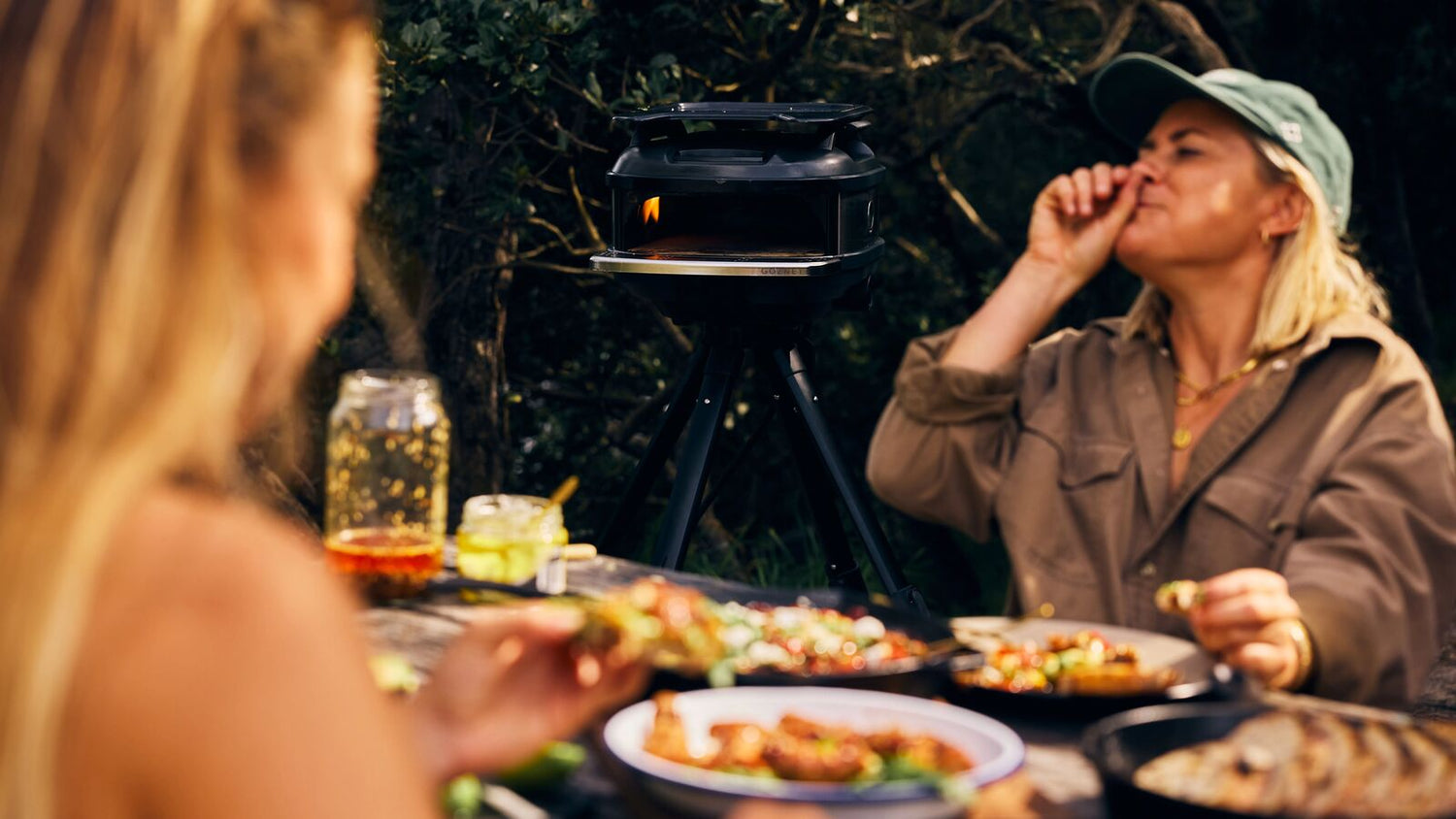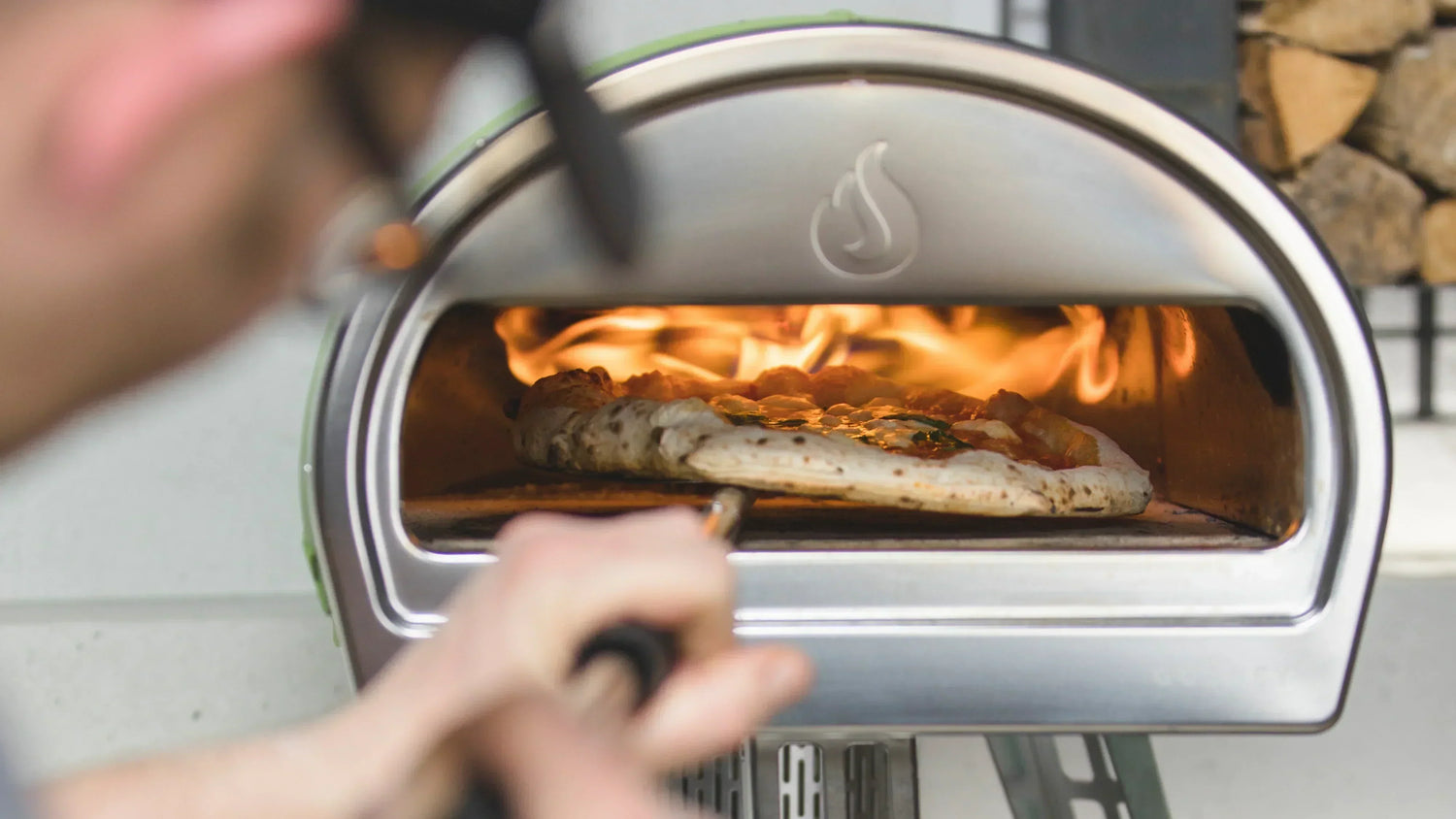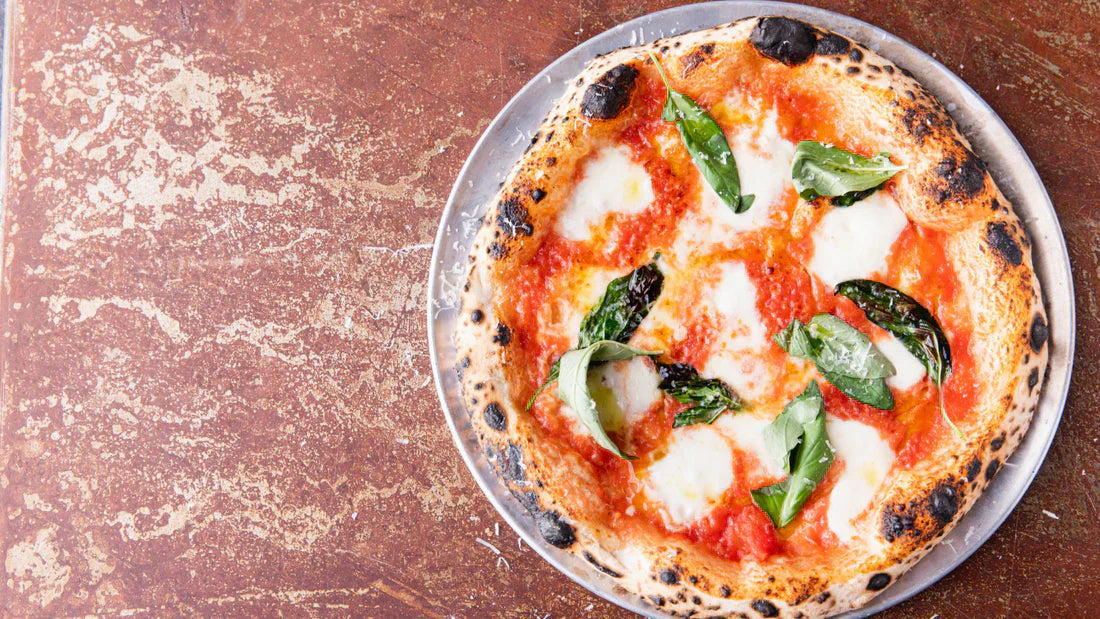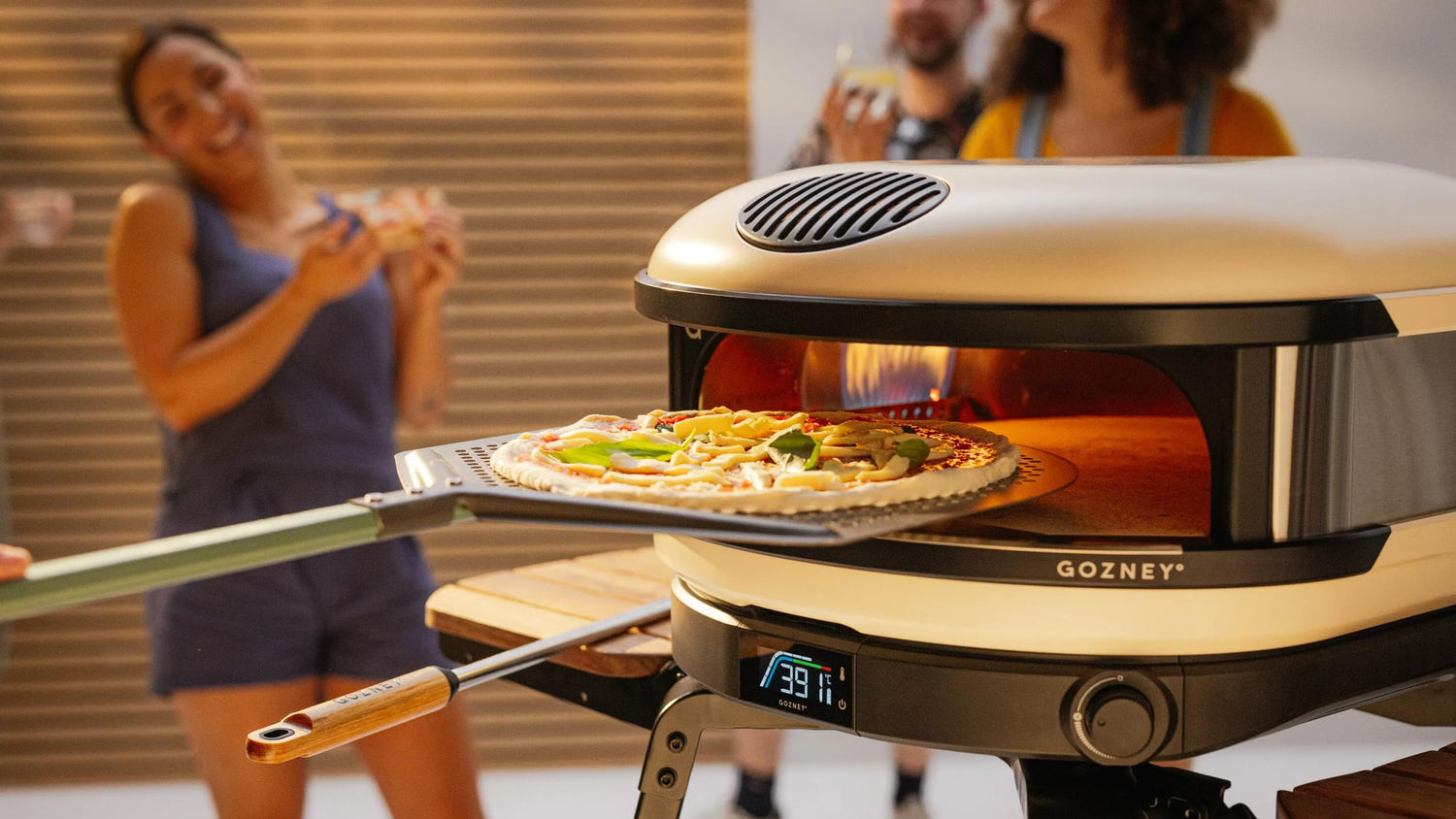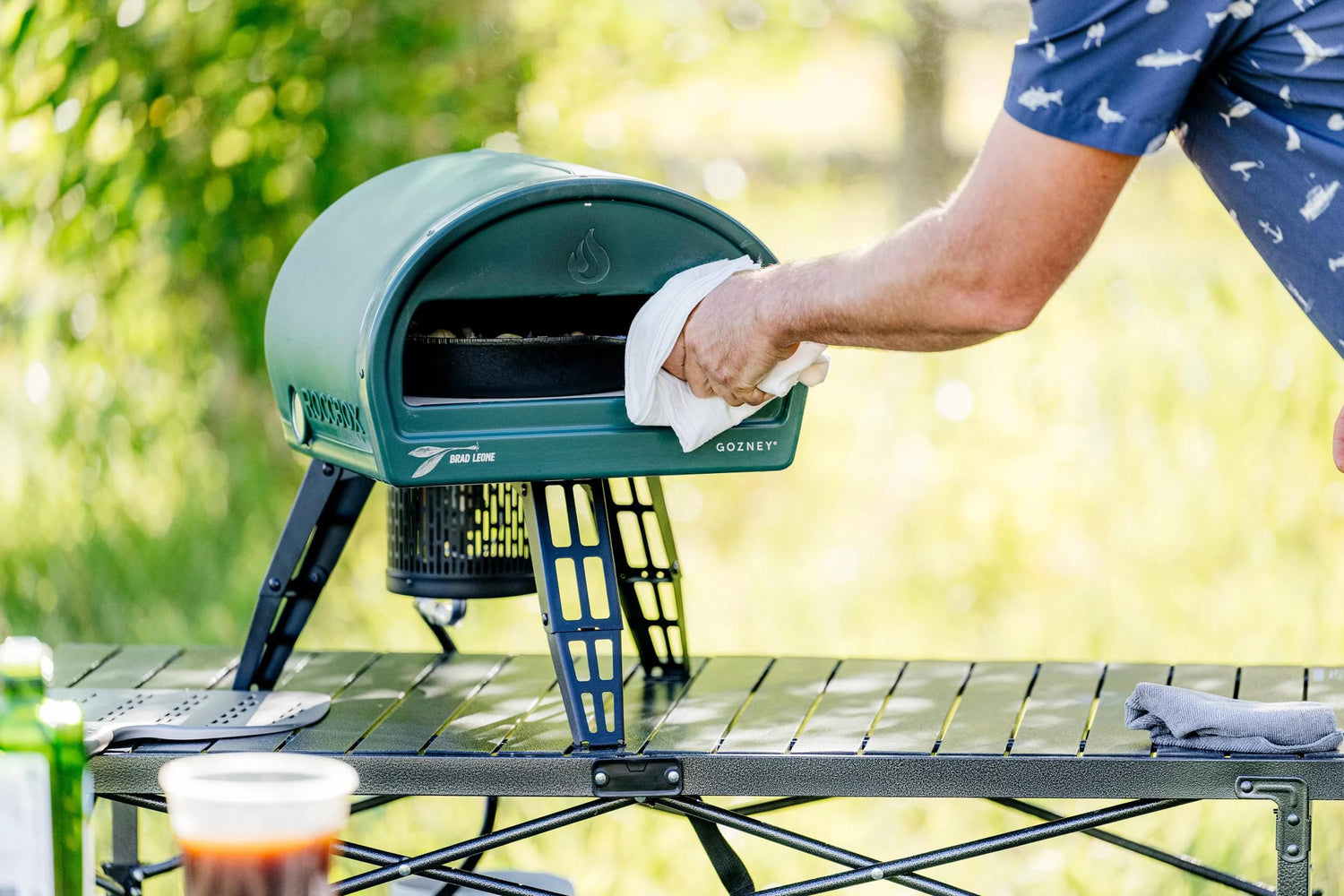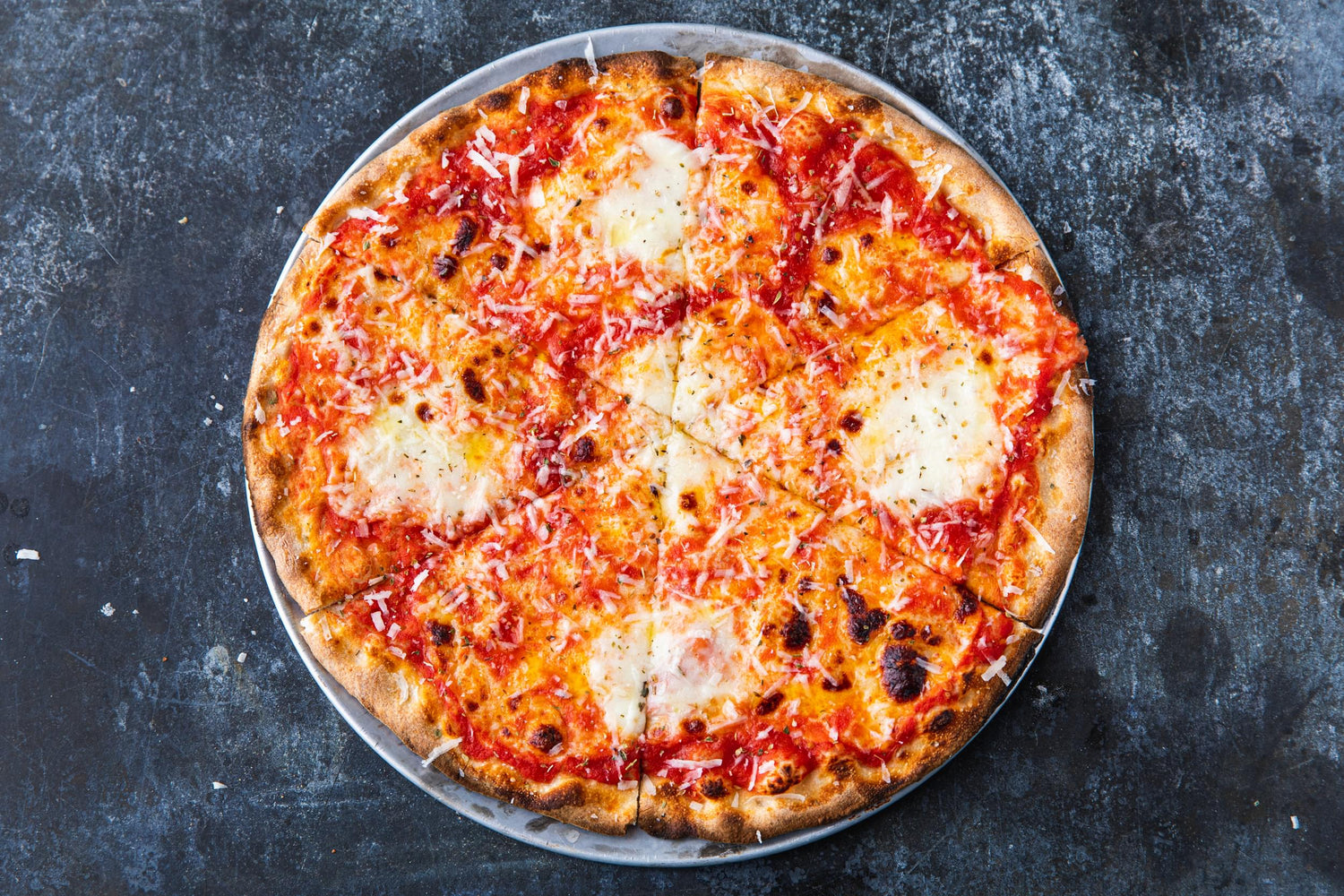The Psychology Behind Sharing Food and Cooking Together
Gathering around the table to share a meal is a source of joy for many and a cherished tradition in cultures around the world - especially across Asia and the Mediterranean. In the United States, we are a country known for its passion for food and famously big portions, and the spirit of sharing is alive and well: 82% of Americans share meals with others. But who are we sharing our meals with? What dishes bring us together? And what do we actually gain from eating with others?
To find out, our team at Gozney surveyed over 1,000 Americans about their food-sharing habits, exploring who they eat with, how often, and the benefits they associate with sharing meals with others. We have also partnered with psychologist and psychotherapist, Dr Andrea Oskis, author of The Kitchen Shrink, to gain further insight on the psychological, long-term benefits of sharing our meals, and why we should be sharing more.
What America thinks about sharing food
Americans are, in general, a food-sharing nation, with over four in five (82%) people saying they regularly share food with those around them. However, some of us are more willing to do so than others. Women tend to be more open to sharing than men - not just at the dinner table, but in the kitchen too. While three in five men say they cook for others as well as themselves, that number jumps to four in five among women.
Generational attitudes to sharing also reveal somewhat of a divide. Although the act of sharing food is as old as time, it's younger Americans who are keeping it alive. An impressive 93% of those aged 18 to 24 say they share meals with others, compared to 78% of those over 65. This points to a growing culture of sharing among younger generations. However, the numbers are still pretty high for all generations, suggesting everyone wants to be around the table with each other.
When it comes to who we’re comfortable sharing with, the results are consistent across the board. The majority of Americans feel comfortable sharing with family members (85%), romantic partners (80%) and friends (67%) - a sentiment shared across age groups, genders and regions. On average, people tend to share food with their partners most frequently - 4.5 times per week on average - with almost a third of Americans sharing food with their significant other every single day.

While being more comfortable around family for meals may seem obvious, there is a science behind it. Dr Oskis explains this as “If we only know someone at drinks, we know them less. But once food is on the table, so is the opportunity for a deeper relationship.”
But this habit goes beyond convenience: nearly two-thirds of people (65%) see this as an act of intimacy that deepens emotional connection. Dr. Oskis explains, “Food is deeply tied to love and connection because it’s been linked to our relationships from the moment we’re born. We associate food with care, safety, and closeness - so cooking for someone or sharing a meal taps into that emotional wiring. It’s why something as simple as eating together can feel so intimate - it brings up feelings of trust, belonging, and being understood.”
Knowing this, it makes sense that 41% of Americans feel uncomfortable with the idea of sharing food with a stranger. Even in modern day, it’s clear that sharing a meal is still one of the most powerful gestures of closeness.
What meals are we sharing the most?
Whether it's a tapas-style spread or simply sitting at the dinner table together, there are countless ways to share meals. But not all of them are viewed equally, and some lend themselves to being shared more than others.
Dinner takes the top spot as the most frequently shared meal, with a quarter of Americans saying they enjoy theirs with others on a daily basis. On average, we’re sharing dinner 3.5 times per week - meaning around half of all meals are eaten in company. Dr Oskis explains this using Robin Dunbar’s ‘The Big Lunch’ study, which found “evening meals are better for building relationships than lunch, the interpretation being that nightfall makes social activities more enchanting and engaging.”
Snacks are also seen to be particularly shareable. From splitting a bag of chips for a picnic in the park to digging into sweets during movie night, Americans share their snacking experiences around 2.9 times a week. Lunch and dessert, however, tend to be more of a solo affair, being shared just 2.5 times per week, making them less communal than other meals.

Whether it’s family dinners, potlucks, or street food culture, these shared moments blend the personal with the collective. According to Dr Oskis, researchers such as Newson & Richerson and Neuman have called this commensality, describing it as a “social tool” that helps us meet nutritional needs, encourages meaningful conversation, and symbolizes the relationships between us. Dr Oskis notes, “The family dinner time ritual is one special example that anthropologists have written much about. Dinner time provides the opportunity to come together after being apart during the day. It is a temporal, spatial, and social moment all in one.”
When it comes to the ultimate food for sharing, pizza takes the crown. Nearly two-thirds (63%) of Americans agree it's the perfect communal dish. But, while it's a clear favourite, not everyone is quite so generous with their slices. Only 26% of men strongly agree that pizza is the best to share, and they’re also more likely to snag the last slice. Those who live with their partner and children, however, are the most enthusiastic sharers. Whether it’s trying out a new Neapolitan pizza recipe or opting for a takeout classic, these households enjoy pizza together an average of 2.2 nights per week - proof that nothing brings people together like a good pizza night.
The benefits of sharing food
Sharing food isn’t just about trying more dishes - it’s also good for the soul. Beyond the flavors, it offers meaningful psychological benefits, helping to strengthen relationships, boost mood, and create deeper social connections.

Since sharing food is often seen as a powerful expression of intimacy, it’s no surprise that nearly two-thirds of Americans say it makes them feel closer to their loved ones, with 64% believing it helps strengthen their relationships. And, the ultimate tool to bring people together - pizza - more than half of us (55%) agree it's the food that fosters connection more than any other.
Dr. Oskis explains the reason behind this feeling: “Eating together is something humans have done for thousands of years and is a powerful way to build trust, strengthen relationships, and create a sense of belonging. But our willingness to share often depends on our relationship with the people we are sharing with. When those bonds are strong, food becomes more than just a meal; it creates a feeling of conviviality: a warm, joyful mix of connection, comfort, and togetherness.”
The benefits go beyond bonding - 63% of people say sharing food also boosts their mood and overall sense of wellbeing. As Dr. Oskis puts it: “Cooking can be a calming, mindful activity - like a moving meditation. The simple, repetitive tasks like chopping or stirring help us relax, and when we cook with or for others, it opens up space for connection, conversation, and that feel-good sense of achievement.”
Here at Gozney, we are all about connection and collaboration. Whether it’s building a collection of chefs and ambassadors or giving pizza classes, we understand the importance of community. The US population seems to agree, with 62% saying that sharing food and cooking with others creates a strong sense of community, Dr Oskis quotes, “The father of psychoanalysis himself, Sigmund Freud (1918) observed, 'To eat and drink with someone was at the same time a symbol and a confirmation of social community’.” Therefore, sharing food has always been more than just nourishment, but also a way to connect.
Trying new recipes or meals is another added benefit of sharing meals with others, and Dr. Oskis suggests that the sharing experience may even enhance the taste: “Research has suggested that food may actually taste better when consumed in the company of others, and associations can be built with food in positive social situations that makes us have a preference for them.”
The benefits of open-air dining and cooking
Whether it’s firing up the BBQ with friends, baking pizzas outdoors, or enjoying a family picnic, eating outside does more than just change the scenery - it can boost your mood and is a natural way of bringing everyone together.
Our research found that the average American dines outdoors about once a week and almost two-thirds (64%) say outdoor cooking is part of their summer routine, showing that this age-old tradition has truly stood the test of time - outdoor cooking may be just as meaningful today as it was thousands of years ago.

More than three in four Americans (76%) say outdoor cooking is the perfect way to celebrate special occasions and bring people together. Over half also say it makes them feel more socially connected than eating indoors. Dr. Oskis explains why, “Outdoor cooking dates back at least 790,000 years. Back then, gathering around the fire helped people feel included, accepted, and safe - because belonging was essential for survival. The shared meals of today are no more than modern ‘social campfires’.”
The sensory experience of outdoor cooking plays a big role, too. According to our research, 75% of Americans say the smell and sound of food being cooked outside creates a more enjoyable dining experience, with 66% reporting a boost in mood and overall well-being. More than half say it also helps them feel more relaxed, energized, or connected to nature. Dr. Oskis notes, “The kitchen is often the heart of the home, but for some it is the garden. And where the kitchen meets the garden, for example, with a live BBQ cooking area, that can be a home away from home, giving us all the benefits of green space.”
And for pizza lovers, the joy is even more immediate - over two-thirds of Americans say the smell of pizza instantly lifts their moods, proving that the aroma of an outdoor pizza oven might just be the ultimate happiness hack.
Our research also found that 60% of Americans would cook outdoors more often if they had better outdoor space or equipment, such as an outdoor pizza oven. It seems improving outdoor spaces and equipment could encourage more Americans to embrace outdoor cooking as a way to connect, creating even more opportunities for shared meals and social bonding.
Looking for ideas on what to cook outdoors together? Check out these pizza recipes to get started:
Sources and methodology
To determine how the US population feels about sharing their food and cooking with others, we surveyed 1,016 people with various questions regarding their eating habits with others.
Additional commentary was provided by psychotherapist Dr Andrea Oskis.

